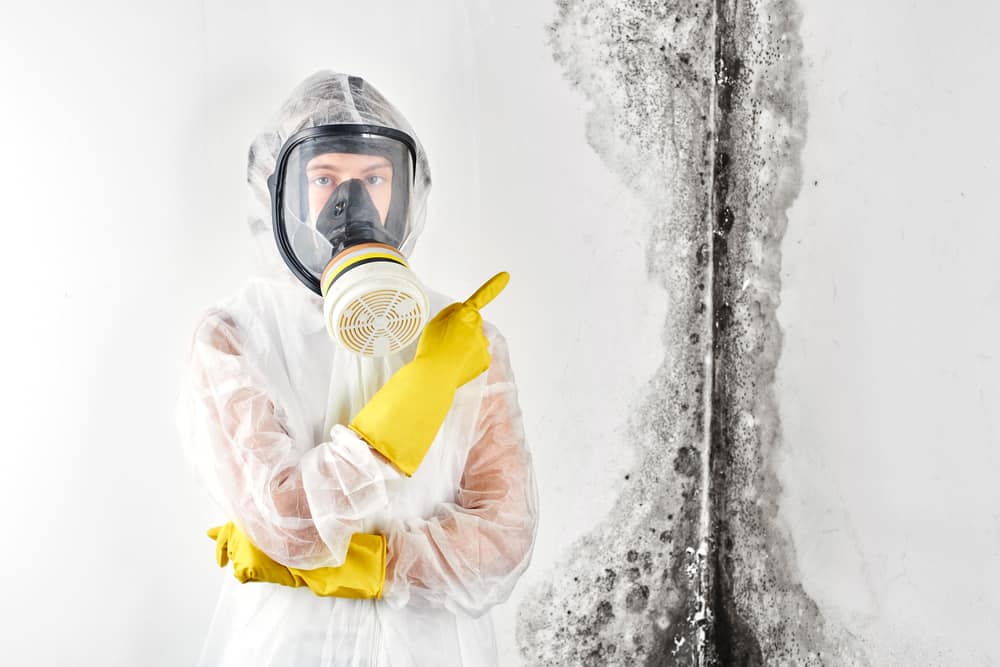What Are Molds?
Molds are fungi. They are unwanted fungi. Unlike other fungi which are edible like mushrooms and yeasts, molds are harmful to ingest and inhale. Yet, they play an important role in the ecosystem by breaking down and digesting organic materials. They are part of the Kingdom Fungi, neither plant nor animal. There is an estimate of more than 100,000 kinds of molds found indoors and outdoors (Heinz, 2019). You expect to see them in damp places and dimly lit areas such as attics, basements, and bathrooms which are always prone to unwanted water. Thus, they thrive at moderate temperatures (60 to 80 degrees Fahrenheit).
Moreover, common molds found in households are categorized into three—allergenic, pathogenic, and toxic. Allergenic and pathogenic molds may be removed by disinfectants while toxic molds require professional removal. They come in different colors. So, identifying molds and the risks they bring is not easy unless you seek the help of a professional.

What are Black Molds?
Black molds are toxic. Thus, they bring risks to your health (Mold Inspectors of Florida, 2021). They even pose more risks because you cannot immediately identify a black mold by looking at it. You need a microscope to do it. They easily grow on cardboard, paper, wicker, and wood. Black molds are usually found in kitchens, bathrooms, laundry rooms, and basements. Stachybotrys chartarum is a common black mold that is a toxic mold (DerSarkissian, MD, 2021). They can appear green in color which produces toxic chemicals through their spores and fungus fragments which are airborne in nature.
Furthermore, black molds are dangerous if they are eaten and are at high risk for people with allergies, asthma, and other hypersensitivities. Persons who have asthma must be on guard for these molds. Exposure to black molds triggers an attack with the following symptoms like wheezing, shortness of breath, coughing, and chest tightness. So, be on the lookout for the places where these molds grow like in places where water leaks, water condensation, and where flooding has occurred.
What Are Orange Molds?
An orange mold is named Fuligo septica, a mold similar in appearance to that of rust. They belong to the Protista kingdom. They are also called slime molds. Slime molds are single-celled organisms while other fungi are multi-celled. At one time in history, slime molds grow and move by creeping and were actually named as a unique animal species (Sands, 2022). Orange molds are wet, slimy, and lumpy in appearance. These molds develop on wood. They are also found in fruits, especially oranges, lemons, limes, and yogurt (Healthida, 2021). Orange-mold growth is usually found on kitchen floors and ceilings since they are exposed to moisture. Thus, these areas are prone to orange molds.
Which Poses Health Risks, Black Molds or Orange Molds?
As mentioned earlier, black molds are toxic while orange molds are not dangerous in nature. Though, if they grow to be numerous and left unchecked, they pose threats to humans, especially those with severe health conditions. These orange molds may cause allergies, breathing problems, lung conditions,s or weak immune systems. Thus, the persons exposed to this kind of molds become ill.
Furthermore, when you leave these molds on your walls and wooden structures, they may cause problems in your house structure. If left untreated, they may result in more damages to your property.
How to Prevent These Molds?
The best solution is to prevent these molds from growing in your households. To prevent, do the following:
- Use an air-conditioner or dehumidifier to keep the humidity in your house at below 50%.
- Call the plumber immediately to fix any water leaks.
- Keep your house well-ventilated, clean, and dry.
- Keep your kitchen and bathroom well-ventilated by providing ventilation fans.
- Dry quickly any floor mats that are wet.
Nevertheless, at the sight of allergenic (mold causing allergic sensitization) and pathogenic (mold causing disease) molds in your kitchen walls or bathroom walls, prepare to remove them using disinfectants. But ensure your protection by wearing protective gear like gloves, eye protection, old clothes so you can wash with hot water later to eliminate stray pores. You may also consider throwing the old clothes away for your utmost protection. Of course, ensure there is well ventilation in the area of disinfection (Leverette, 2021).
- Chlorine Bleach- You should dilute it before using it to clean the molds.
- Hydrogen Peroxide- Prepare three to ten percent (3-10%) solution when using to clean the molds.
- Distilled White Vinegar- The acidity of vinegar kills the molds. But it may not be as fast as chlorine bleach or hydrogen peroxide.
- Baking Soda and Borax- These products have a high pH (potential hydrogen). High pH prevents the growth and survival of molds.
Of the cleaning solutions above, chlorine bleach is the strongest but it is toxic and may cause irritation in the eyes, mouth, lungs, and skin, especially to those with asthma and other respiratory problems. Thus, you may consider using hydrogen peroxide, distilled vinegar, baking soda, and borax. Though borax is more effective than baking soda, it is not as effective as the other stronger cleaning products (Leverette, 2021).
Who to Call for Mold Removal?
For your safety and protection, it is highly recommended that you call a professional mold removal agent to serve you. Only the professionals ensure the proper and skillful removal of the molds in your house, especially to those molds which you do not see with your naked eyes. They can do that for you with a full range of mold removal. What they do first is to inspect your property, test for mold infection, the remedy to eliminate the molds, and restore water damages. So, why wait for those hidden molds to grow in your households? Get immediate help now! Contact San Jose Mold Removal.Com!

